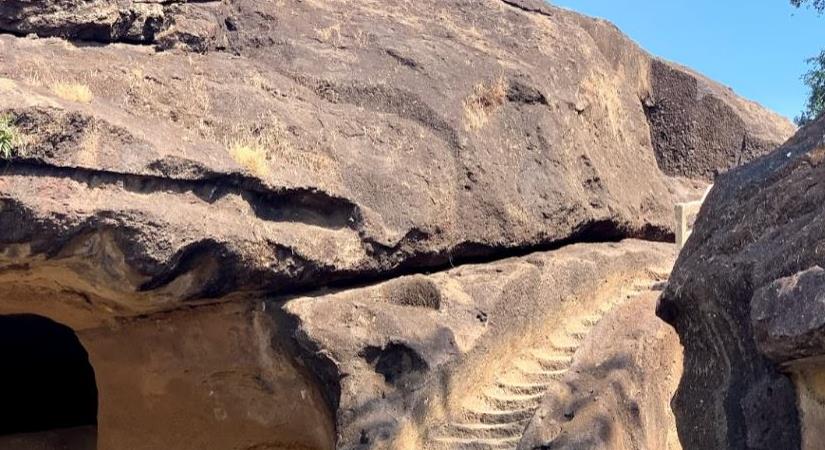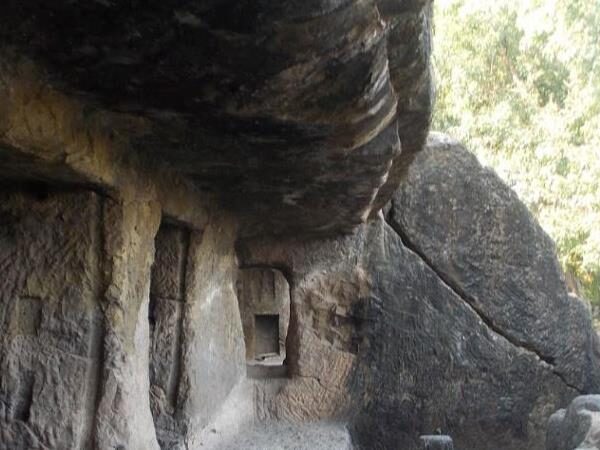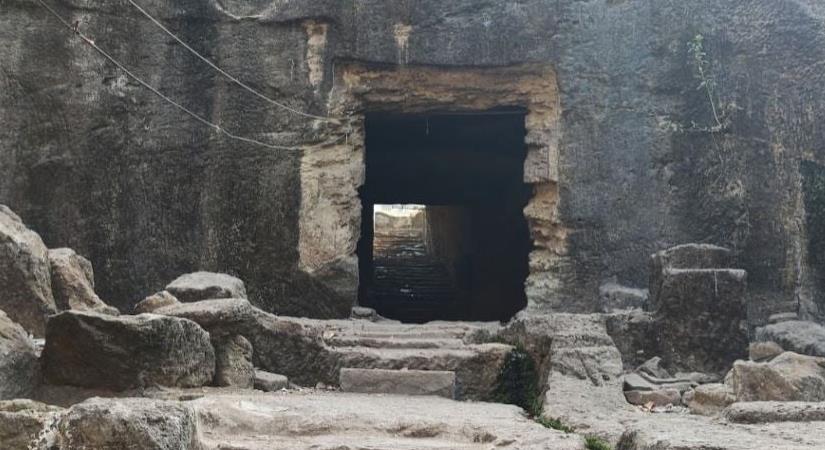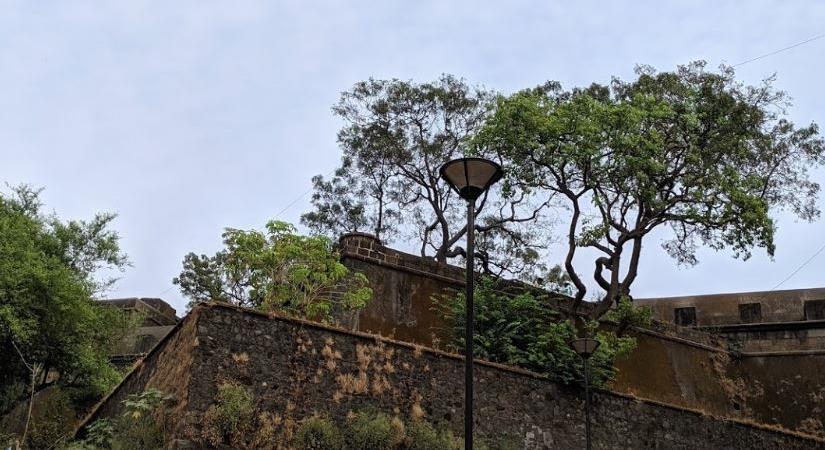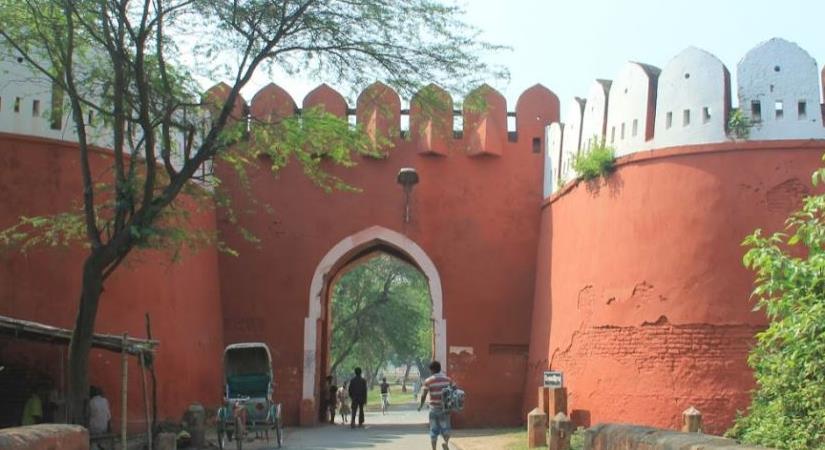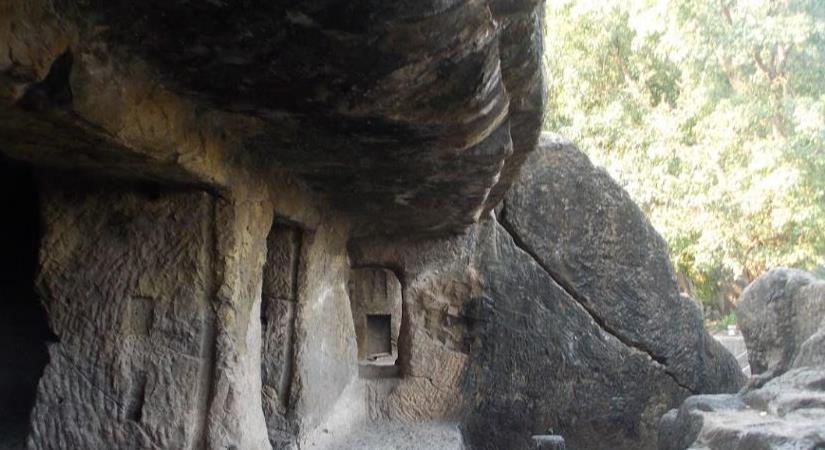Elephanta Caves is a UNESCO World Heritage Site located on the Elephanta or Gharapuri island, just 11 km from the bustling city of Mumbai.
But don’t let the tranquil island setting fool you – these caves pack a punch of medieval Indian rock-cut art and architecture that will leave you speechless.
Once known as Gharapurichi Leni, the Elephanta Caves are now ruins of what were once elaborately painted artworks, but they still manage to provide an amazing view of the Mumbai skyline.
And the best way to get there? Hop on a ferry ride from Gateway of India and enjoy the ride. It’s like a mini-adventure in itself, and the Arabian Sea breeze is the perfect backdrop for your next Instagram post.
Do you know, it is also an unlikely trekking destination. Yes, you read that right. You can hike your way to two canons located near the caves. Who knew you could combine a heritage visit with a trekking experience? We’re calling it “Cannon Trekking,” and we think it’s the next big thing.
Once you’ve worked up a sweat, it’s time to explore the caves themselves. The main attraction is the collection of cave temples dating back to the 5th to 7th centuries and dedicated mostly to Lord Shiva. There are two groups of alcoves in the site of the Elephanta Caves: the first is a large group of five Hindu caves, and the second one is a smaller group of two Buddhist caves.
The Hindu caves contain stunning stone sculptures representing the Shaiva Hindu sect, and the caves are an expression of art that will leave you breathless. You’ll see some of the most important imageries ever sculpted here, including ‘Trimurti’ or three-headed Shiva, ‘Gangadhar’ which is a manifestation of the river Ganga as she descends to the earth, and ‘Ardhnareshwar’, which is a representation of Shiva and Parvati in the same body. It’s like a mini-mythology lesson brought to life.
But the main cave is where the magic happens. It was the Hindu place of worship under the Portuguese rule and has a pillared mandapa, open porticoes, and an aisle. The walls are carved out of stone and a number of deities make an appearance here, including Shiva-Parvati on Kailash, Ardhanarishvara, Trimurti, Gangadhara, and Nataraja or a depiction of Shiva performing the Taandav.
Plus, the east wing shrine of the Elephanta Caves has carvings on Kartikeya, Matrikas, Ganesha, and Dvarapala upon its surface, while the west wing has Yogishvara and Nataraja adorning the caves.
But the fun doesn’t stop there. Once you’re done exploring the caves, head to the small archaeological museum where you can observe ancient items related to Elephanta Island. The first hall presents the narrations of the displays in Elephanta, and the next gallery shows a plethora of black and white photographs of other rock-cut temple architecture of India. Visitors can also see the heritage attractions featuring large maps and a number of other details in another hall. It’s like a mini-Indiana Jones adventure.
So when should you visit? Winter months from November to February are the best time to visit the caves. Avoid peak monsoon season (June to August) as the sea becomes unpredictable, and ferry schedules get disrupted. And make sure to come in the morning hours to make the most of your visit.
The ferry rides are open from 8.00 AM to 5.00 PM and the entry fee is INR 10/-
The Elephanta Caves contain rock cut stone sculptures, mostly in high relief, that show syncretism of Hindu and Buddhist ideas and iconography. The caves are hewn from solid basalt rock. Except for a few exceptions, much of the artwork is defaced and damaged. The main temple’s orientation as well as the relative location of other temples are placed in a mandala pattern. The carvings narrate Hindu mythologies, with the large monolithic 20 feet (6.1 m) Trimurti Sadashiva (three-faced Shiva), Nataraja (Lord of dance) and Yogishvara (Lord of Yoga) being the most celebrated.
These date to between the 5th and 9th centuries, and scholars attribute them to various Hindu dynasties. They are most commonly placed between the 5th and 7th centuries. Many scholars consider them to have been completed by about 550 CE.
They were named Elefante – which morphed to Elephanta – by the colonial Portuguese who found elephant statues on the caves. They established a base on the island. The main cave (Cave 1, or the Great Cave) was a Hindu place of worship until the Portuguese arrived, whereupon the island ceased to be an active place of worship. The earliest attempts to prevent further damage to the caves were started by British India officials in 1909. The monuments were restored in the 1970s.[2] In 1987, the restored Elephanta Caves were designated a UNESCO World Heritage Site. It is currently maintained by the Archaeological Survey of India (ASI).
